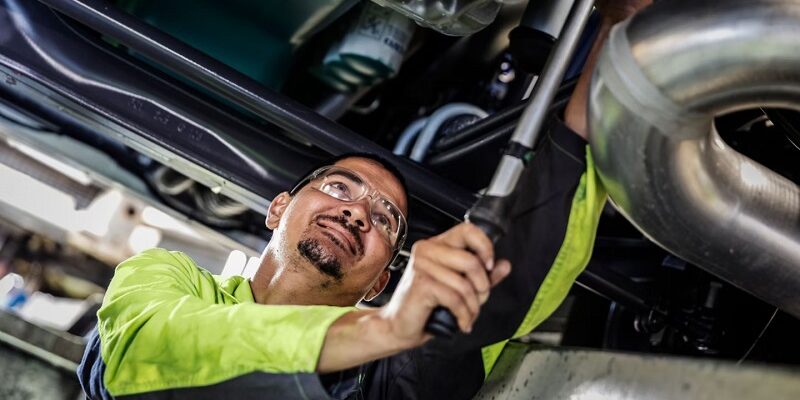In order to maintain the ideal engine temperature and guarantee effective performance, thermostats are essential components of commercial vehicles. But with time, they may have issues just like any other part of the car. A broken thermostat may cause serious problems, such as overheating, inefficient use of gasoline, and even damage to the engine. Fleet managers and drivers may swiftly detect and fix problems by being aware of frequent thermostat problems, ensuring that their cars continue to be dependable while on the road. Here are the Diesel Repair in Rocklin, CA based services for diesel cars.
Engines That Overheat
Engine overheating is one of the most common problems with thermostats in commercial vehicles. An inoperable thermostat inhibits coolant flow, which raises the engine’s temperature over recommended operating levels. Steam coming from beneath the hood, a warning light on the dashboard, and the temperature gauge entering the red zone are all indicative of the problem.
Solution: The first thing to do in the event of overheating is to safely stop and switch off the engine. Check the coolant level once the engine has cooled; low coolant may also be a sign of leakage. The thermostat can be stuck closed and need to be replaced if the coolant level is sufficient. When replacing a thermostat, the coolant should normally be refilled after the old thermostat has been removed, the gasket surface has been cleaned, and a new thermostat with a fresh gasket is installed.
Unreliable Temperature Control
Inconsistent temperature control is yet another prevalent thermostat problem in commercial cars. The engine temperature indicator may fluctuate, regularly cycling between overheating and underheating, which drivers may notice. Unpredictable coolant flow may be the result of a thermostat that is poorly calibrated or opens slowly.
Resolution: Drivers should initially check the temperature gauge when operating a vehicle in order to detect uneven temperature control. It is best to get the thermostat examined if they verify variations. Thermostats may be tested at many auto shops without having to be taken out of the car. To restore normal operating temperatures, it is recommended to replace the thermostat with a new one if it is verified to be faulty.
Leaks in Coolant
Another major worry associated with thermostat problems in commercial vehicles is coolant leakage. Increased cooling system pressure due to a malfunctioning thermostat may lead to hose and seal failures, which can result in leaks. Wet areas under the car and a discernible reduction in coolant levels are signs of coolant leakage.
Solution: Finding the leak’s source is essential if a coolant leak is suspected. It’s critical to inspect the thermostat housing since outdated gaskets might deteriorate and let leaks occur. If leaks are found, it’s often essential to repair the gasket, any broken hoses, and the thermostat as well. Frequent maintenance and inspections may aid in preventing the emergence of this problem in the first place.


